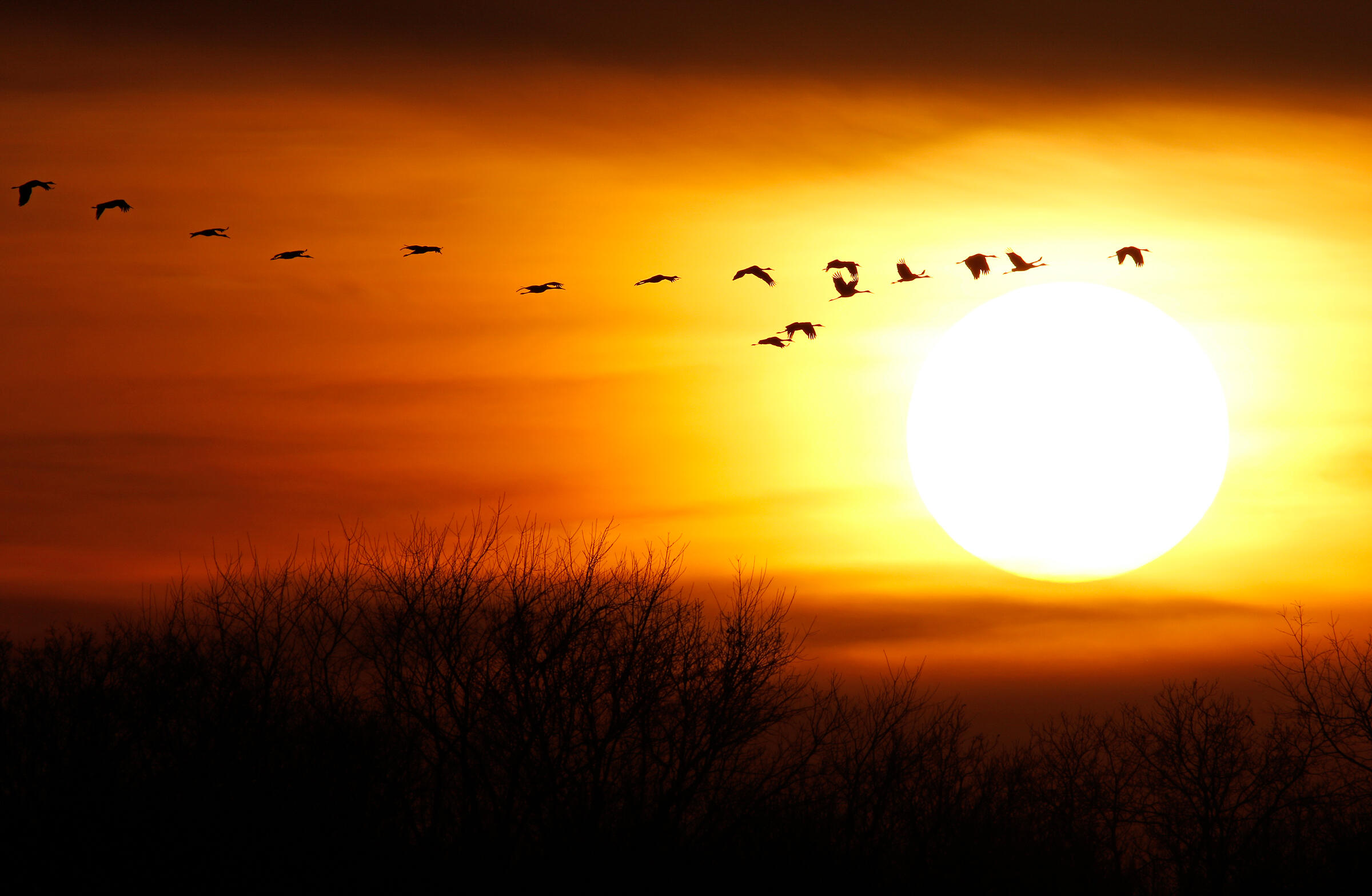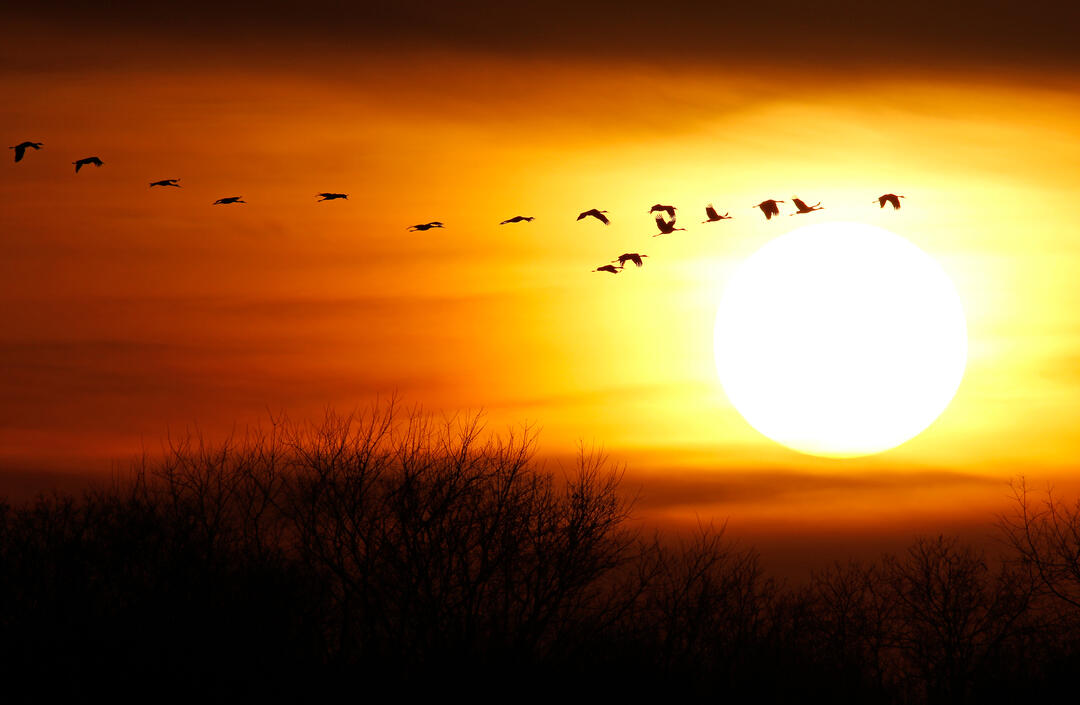Last week the National Audubon Society released our Bird and Transmission Report, presenting our strategy for how to build out needed renewable energy infrastructure while avoiding the worst impacts to birds. In the report is a discussion of the Sunzia Transmission line that serves as a case study for how a project can be designed to achieve this goal.
Since the release of the report, we have heard concerns from Audubon members in New Mexico and Arizona about our support for this controversial project. The concern is a demonstration of the care and compassion that our members hold for bird life in the Southwest, and we applaud it. Therefore, we feel it is only fair to explain how we came to our position. The following will hopefully provide background on the most sensitive aspects of the project and shed some additional light on our position.
Rio Grande Crossing – In its early days, the proposed route for the line would have seen it cross the Rio Grande in New Mexico immediately north of Bosque del Apache refuge. Based on observed crane movements in the region, we felt strongly that this location presented a high risk of collision for Sandhill Cranes and migratory waterfowl, causing us to oppose the route.
When the Department of Defense requested the line move North to avoid White Sands Missile Range, the new proposed location (North of Bernardo) was in an area with much less frequent crane usage and much lower collision risk. Combine this with the commitment by the company to deploy advanced avian collision avoidance systems on the lines as they cross the river corridor, and the risk of collision has been greatly reduced.
An additional benefit of this new crossing location is the opportunity it provides to parallel the line with the existing Western Spirit Transmission right of way, in effect widening an existing transmission corridor across the Rio, rather than creating a new one.
At our urging, Pattern Energy (the owner of the project) also compared the impact of using an overhead crossing rather than putting the line underground and came to the conclusion that maintaining the cleared right of way (a requirement for an underground line) would have significant impact on critical habitat designated for the endangered Southwestern Willow Flycatcher and threatened Western Yellow-billed Cuckoo. Our assessment concurred with this decision.
Sevilleta National Wildlife Refuge Crossing – Moving the route north to the less impactful crossing has the unfavorable result of forcing the line to traverse the Sevilleta Refuge as it travels south to connect to the remaining route. Luckily there is an existing smaller power line that already follows the same route across Sevilleta. By upgrading the existing poles, Pattern will be able to co-locate the current line with the existing one. In doing so they are also able to reduce the number of poles needed to support the line, in effect lessening the area disturbed by the footprint of poles.
There is a dangerous precedent that could be set if we open our National Wildlife Refuges to any and all industrial development. Which is why the Fish and Wildlife Service conducted an assessment of the compatibility of the project with the purpose of the refuge and found that by allowing the project, the footprint of the poles would be reduced, thereby increasing the amount of habitat available for the refuge to manage.
In addition to the co-location with an existing line, Pattern Energy has agreed to purchase over 700 acres of prime bottomland immediately adjacent to Sevilleta that also includes senior rights to 500 acre feet of Rio Grande water. Ultimately the property and water will be transferred to the National Wildlife Refuge system for management. Considering the co-location of the lines and the addition of new land and water to the refuge system, this project will put Sevilleta Refuge in a better position to support the area’s ecology and wildlife.
Lower San Pedro River Valley – Many of our members have expressed concerns with the proposed route through the Lower San Pedro Valley in Arizona. These concerns have been primarily focused on two issues, the ecological impact of the line on an otherwise intact landscape and the process by which the original route was proposed and conceived.
We share the concern for any loss of habitat or habitat fragmentation that results from a large-scale industrial project such as the construction of a new transmission line. The impacts of this line through the San Pedro Valley are broader and more widespread than a single river crossing, therefore, since the early days of the project we have advocated for a robust mitigation package. We have been pleased with the work Pattern has done with Arizona Department of Game and Fish to develop a plan to create habitat for birds, bats and other wildlife which includes plans to replace any non-salvageable Saguaro or Agave at a 3:1 ratio or higher.
Given the importance of river canyons to the natural hydrology of the San Pedro River and as high value wildlife corridors for threatened and endangered species we feel that it is vitally important that consideration be given to the adverse ecological impacts that construction and maintenance of the line could cause in these areas. Specifically, we advocated that impacts to Buehman, Edgar, and Paige Canyon must be avoided by using hilltop placement of towers or sufficiently tall towers to span them without the need for vegetation clearing and maintenance, not running parallel down canyons, thereby avoiding opening the length of canyons to recreational off-road vehicles and utilizing helicopter to installation avoid the need to create or increase use of new or existing roads. These best practices have all been included in the plans to mitigate the ecological impact of the project.
Routing Process – While we chose not to include an in-depth discussion of the 17-year journey towards approval in our case study, we do recognize that the process had many flaws. In the beginning the Sunzia Corporation (the original owner of the line before it was sold to Pattern Energy) proposed a route with little consideration for environmental impacts and with little local stakeholder input. The result was a proposed route that would have crossed the Rio Grande in New Mexico in a very sensitive area for Sandhill Cranes and in Arizona there was little consideration of the environmental impacts that the line would have as it traveled through the Lower San Pedro Valley.
At the time we opposed the route and submitted multiple public comments to that effect. Meanwhile, we have seen 4 different presidential administrations, complete turnover of Bureau of Land Management (BLM, the permitting agency) leadership, and a change in ownership of the project. The history of government and industry mismanagement of the process is the primary reason for the 17-year delay in permitting, but the decision-makers, mandates, and circumstances have changed dramatically since then and we have found both the company and BLM to be more than willing to consider our concerns and discuss plans in good faith.
Nonetheless, Audubon recognizes there are problems with how we permit these projects. This is why we are remaining active in current discussions in DC that are exploring options for environmental permitting reform. We must make better decisions quicker. We believe this to be possible and necessary.
It is the position of the National Audubon Society that climate change provides a clear and imminent threat to almost two thirds of bird life in North America (see Survival by Degrees). Transitioning away from a carbon-based economy in time to limit the worst impacts of the climate crisis requires immediate action if we are going to save America’s bird life. While some have suggested to us that strategies such as reducing household energy consumption, rooftop solar, and a complete transition to electric vehicles would be preferable strategies to industrial scale renewable projects like Sunzia, there simply is not the political will, policy mechanisms or any realistic strategy for achieving these at the needed scale in the time we have. We can and will advocate for these strategies as appropriate, however we feel it is undeniable that industrial scale renewable energy projects will be the primary way we move the renewable energy transition forward.
Our hope in elevating Sunzia as a case study is to encourage the adoption of the best practices employed in this project in future projects and to let the industry know that we are willing and able to negotiate with them in good faith and get to “yes” should they develop projects that don’t sacrifice the habitat birds need to achieve the climate birds need. This project will bring 3.5 gigawatts of renewable energy onto the western grid and because of our involvement will do so with minimal impact to local bird life. We consider this a “win” and hope to see other projects follow the same example.
If you would like to learn more about Audubon’s Birds and Transmission Report you can join our upcoming webinar on Wednesday, August 23rd at 6pm MT/5pm PT, hosted by Audubon Southwest Executive Director, Jon Hayes, register here.







